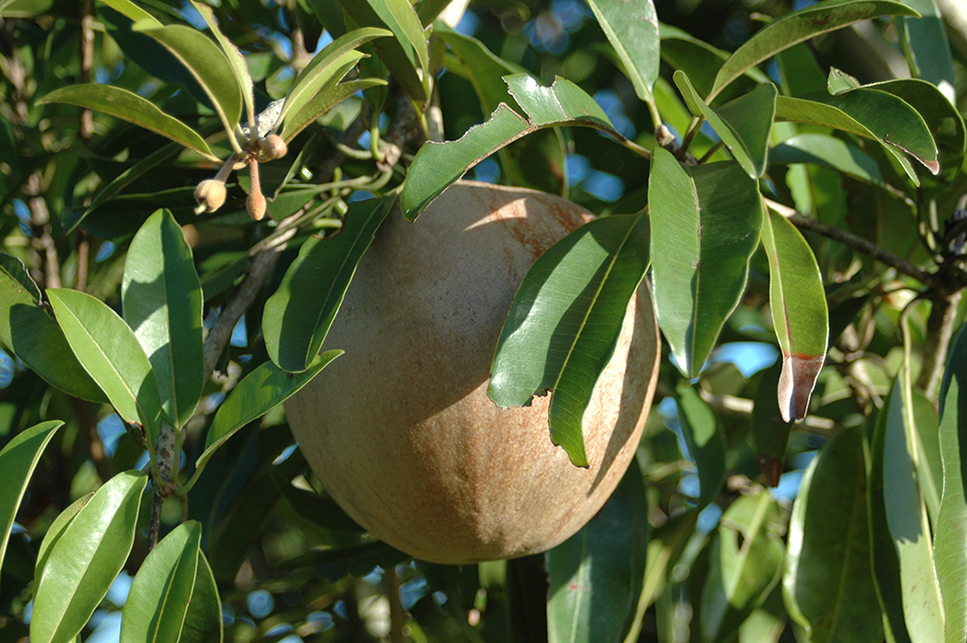| Clonal Repository for Tropical and Subtropical Germplasm |

|
|
Objectives
|
There are 28 plantain and 84 banana accessions in the collection. This germplasm represents a wide range of genotypes and phenotypes containing variable plant and bunch traits, and possessing resistance to major pests and diseases.
|
| Introduction
Tropical/subtropical germplasm resources have been reduced in their natural habitats by indiscriminate human activity, pressure from emerging pests, diseases and viruses and weather-related causes. The loss of genetic diversity can be effectively reduced with the establishment and proper maintenance of ex-situ collections in the field and in-vitro culture. The establishment of field collections safeguard against germplasm losses due to natural disasters, facilitates long-term preservation and accessibility of domestic and foreign germplasm, offer an opportunity for the characterization and evaluation of clones and/or cultivars, and serve as genetic stock centers to readily meet the needs of current and future improvement programs. In-vitro preservation reduces the risk of virus, pest and disease dissemination that may occur during germplasm exchange and distribution, accelerates the multiplication and distribution of valuable germplasm, and reduces the space needed for germplasm conservation and maintenance costs. Characterization and evaluation assist in maintaining the genetic integrity of plant materials after an extended period of continuous propagation, and help germplasm users to recognize clones with desirable traits for later use in crop improvement programs. This research involves the introduction, evaluation, characterization and distribution of virus-free tropical/subtropical germplasm, and its preservation for long-term accessibility. Materials and Methods Primary field collections of plantain and banana (Musa spp.), and Annona spp. have been established in replicated plots and under intensive management for proper characterization and evaluation. Some of the Musa clones possess resistance to black Sigatok a, and were introduced from active breeding programs sponsored by the International Network for the Improvement of Banana and Plantain (INIBAP). We are in the process of establishing additional primary collections of mamey sapote (Pouteria sapota, Jacq.) and sapodilla (Manilkara sapota L., v. Rogen). Highly discriminating morphological descriptors and molecular markers will be used during the characterization and identification process. When appropriate, the plant descriptors developed by the International Plant Genetic Resources Institute (IPGRI) will be adopted. Random Amplified Polymorphic DNA (RAPD) or any other polymerase chain reaction (PCR) based markers that uses random primers to generate DNA fragments will be used in the genetic characterization of the germplasm. We will attempt to successfully multiply and preserve in-vitro all the germplasm assembled in the primary collections. Standard tissue culture techniques mainly recommended for fruit crops will be adopted or modified and tested. From time to time, the regenerated germplasm will be field tested to ensure its genetic integrity. The program also maintains a collection of bamboos, and back-up collections of avocado (Persea americana, Mill.) and mango (Mangifera indica L.) to support similar ARS programs at Georgia and Florida. |
|
|
Biological Science Research Technician, Yaleidis Méndez, working with plantain tissue cultures. |
|
 |
 |
There are 25 sapodilla accessions already under the custody to this repository. In addition to its consumption as a fresh fruit, the pulp is used in the confection of ice cream, marmalade and dry fruit candy. The tree-latex is used for the elaboration of chewing gum.
Accomplishments
The plantain collection has been characterized and evaluated using proposed morphological and genetic descriptors. The clones were first organized into two major groups and five sub-groups on the basis of their genomic composition, bunch phenotype and pseudostem architecture. Once the clones were arranged under this scheme, these were statistically compared within each sub-group for 20 plant, bunch and individual fruit traits. The scheme provides for the clustering and separation of clones regardless of their geographical origin and common names, offers the opportunity for users to become familiar with the economic potential of the various clones from the outset, and allows for the reduction of the number of accessions in TARS plantain collection from 28 to 21 clones. The described clones have been posted into the Germplasm Resource Information Network (GRIN).
A 40-month study was conducted to evaluate five nitrogen fertilizer rates in banana grown on a highly weathered soil and under rainfed conditions. During the growth and development of three crops we collected data on plant and bunch traits, biomass green and dry weights, nutrient concentration in the various plant organs and yield. Regardless of the crop, a maximum yield response of 57,060 kg/ha of marketable fruits was obtained with a nitrogen application of 240 kg/ha. This yield was related to a nitrogen concentration in the third uppermost youngest leaf of between 2.75 and 2.85 g/kg four months before the bunch was harvested.
Additional Resources
- Plant accessions available at TARS (from GRIN Website)
- Disclaimer for germplasm distributions
- Germplasm orders page at GRIN
- List of trees and palms on the UPRM campus
Plant species not part of the NPGS at the USDA-ARS Tropical Agriculture Research Station site, but locally accessible could be made available to bona fide researchers. Investigators should contact Dr. Ricardo Goenaga to arrange request.


